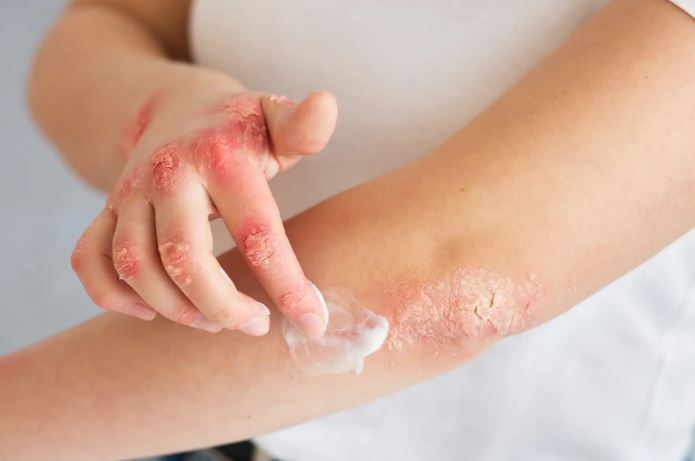Role of Ayurveda Medicine in the management of Vicharchika vis a vis Contact Dermatitis (Eczema)
DOI:
https://doi.org/10.21760/jaims.9.7.34Keywords:
Vicharchika Roga, Eczema, Contact Dermatitis, Rakta Shoodaka, Skin disorderAbstract
Vicharchika is a chronic dermatological disorder commonly associated with itching seen in India Subcontinent. It is characterized by Kandu (itching in the skin), black eruptions (Syam Pidakas), and Srava (Oozing). It Is a psychosomatic disorder where itching and oozing in the lesion aggravates on increased psychological stress. It is sometimes associated with sleeplessness and itching during night. In Ayurveda, Nidana Parivarjana, Vyadhi Pratyanika Aushadhi Prayoga, Pancha Karma therapy. Practice of Yoga and Pranayama, Pathapathya Prayoga and diet therapy are advised in the management of Vicharchika Roga, Yogas like Mahamanjishtadi Kashaya, Manjishtadi Kashaya, Maha Tiktaka Kashaya, Tiktaka Kashaya, Patola Katu Rohinyadi Kashaya, Katuki Kwatha, Khadirarishta, Arogya Vardhini Vati, Guggulu Tiktaka Kashaya, Panchatikta Ghrita Guggulu, Brihan Marichyadi Taila, Maha Marichyadi Taila and Nalpaaradi Tailas are frequently used in this disease. These drugs are having the actions like Tikta Rasa Yukta, Kashaya Rasa Yukta, Ushna Virya, Rakta Shodhaka, Kushtaghna, Kandughna, Rasayana, Kapha Vatahara, Antistress, Adaptogenic, Anxiolytic, Sedative, Anti allergetic, Immuno suppressant and CNS depressant actions. Vicharchika usually needs prolonged treatment. Present paper highlights about the role of Ayurveda medicine in the management of Vicharchika vis a cis Eczema in detail.
Downloads
References
Sharma P V, Dravyaguna Vijnana Part II, Chaukabha Bharati Academy, 16th edition, 1995, PP 873.
Shastri JLN, Dravyaguna vijnana, Chaukambha Press, New Delhi, Vol II, 2005, PP 650.
Nadakarni KM, Indian Materia Medica, Vol II, Bombay Popular Prakashan, Mumbai, PP 968.
Ram P Rastogi, Compendium of Indian Medicinal plants, Volume II, CDR1, Lucknow, 1985-1989, PP 930.
Warrier PS, Indian Medicinal Plants Vol I, Arya Vaidya Sala, Kotakkal, Orient Longman Ltd, 1996, PP 140.
Siddhanandan Mishra, Bhaishajya Ratnavali, Siddhiprada commentary, Chaukambha Sur Bharati Prakashana, Varanasi, 2005, PP 1116.
Jha C. B., Ayurveda Rasashasthra, Chaukambha Sur Bharati Prakashanan, Varanasi, 2000, PP 481.
Shastri J L N, Dravyaguna Vijnana, Vol II, Chaukambha Press, New Delhi, 2005, PP 650.
Raghunathan K, RomaMitra, Pharmacgnosy of Indigeneous drugs, CLRAS, New Delhi, 2nd edition, 2005, PP 1130.
Sharma P. C., Yelne M. B. Dennis T.J., Database on medicinal Plants used in Ayurveda, Volume S, CCRAS, New Delhi, 2002, PP 572.
Acharya S, Updated Ayurveda, Shripathi Acharya Manipal, 2011, PP 140.
Acharya K G, Agraushadhigalu, Shripathi Acharya, Manipal, 2012, PP 70.
Acharya S, Researches in Ayurveda, Shripathi Acharya, Manipal, 2010, PP 127.
Acharya S, Ayurveda Vijnana, Shripathi Acharya, Manipal, 2011, PP 170.
Anon, Vaidya Yoga Ratnavali, IMCOPS, Chennai, 2000, PP 691.
Chopra R N, Indigeneous drugs of India, 2nd editon, Culcutta, Chakravarti, Chaterji and co Ltd, 1958, PP 449.
Acharya S, Sarva rogada cikitseyalli Aurveda, Shripathi Acharya, Manipal, 2012, PP 70.
Ganga Sahay Pandeya, Chunekar K. C., Bhava Prakasha Nighantu, Chaukambha Bharati Academy, Varanasi, 2002, PP 984.















